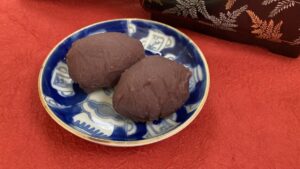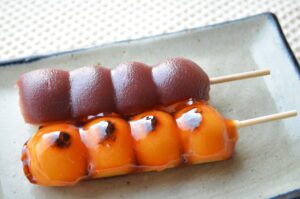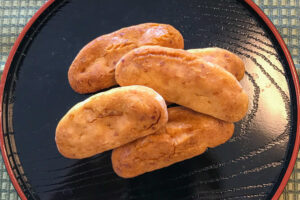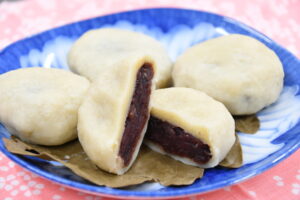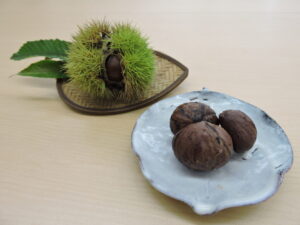Wagashi (Japanese Traditional Dessert, Best 10 in Kanto)
”WAGASHI” is traditional Japanese confectionery, strongly connected to the four seasons. You can enjoy the visual beauty of WAGASHI as well as its delicious flavor. One way to enjoy WAGASHI is to learn about its history, which is deeply rooted in the motifs and events of the four seasons.
WAGASHI is made in various regions of Japan, taking advantage of local agricultural products.
Here are our original best 10 rankings of WAGASHI in Kanto regions based on calculating the number of tags on social media and the number of web searches.
Why don’t you find your favorite WAGASHI ?
和菓子這詞是指跟四季緊密相連的日本傳統點心。這種傳統點心不但能從味覺上品味,也可以從視覺上享受它們的美感。而了解藏在和菓子上的圖案背後的歷史和它們與四季的關連,亦不失為一個品味它的方法。 另外,這些和菓子都是使用本地種植的農產物,在日本各地製造的。
為了讓大家更加了解在日本最受歡迎的和菓子,我們根據社交平台的引用次數和網絡搜索引擎的搜尋次數,為大家整理出關東地區最受歡迎的十個和菓子排名!
你也快點來找你心目中覺得最好吃的和菓子吧!
Best 10 in Kanto
1. Botamochi (Tochigi Prefecture)
2. Igamanjyu (Saitama Prefecture)
3. Akamochi (Ibaraki Prefecture)
5. Kakimochi (Chiba Prefcture)
6. Udemanjyu (Saitama Prefecture)
7. Kurinoshibukawani (Saitama Prefecture)
8. Yakimanjyu (Gunma Prefecture)
9. Kusamochi (Tochigi Prefecture)
10. Sakamanjyu (Kanagawa Prefectre)
1. Botamochi (Tochigi Prefecture)
Glutinous and non-glutinous rice mashed together, rolled into a bale shape, and wrapped in a sweet bean paste.
Photo source: Ministry of Agriculture, Forestry and Fisheries |
2. Igamanjyu (Saitama Prefecture)
Igamanju, a steamed combination of manju and sekihan (red rice), has a surprisingly sweet and sour flavor and firm texture, and once you try it, you will become addicted to it!
Photo source: Ministry of Agriculture, Forestry and Fisheries |
3. Akamochi (Ibaraki Prefecture)
Aka-mochi” is a red-colored rice cake made from red corn flour. Photo source: Ministry of Agriculture, Forestry and Fisheries |
Dumplings made with boiling rice flour in a round shape. Dumplings skewered and roasted are called kushidango.
Photo source: Ministry of Agriculture, Forestry and Fisheries |
5. Kakimochi (Chiba Prefcture)
Kakimochi is made by deep-frying or charcoal-grilling mochi (rice cakes) in oil, mainly as a snack for tea ceremony, and by placing the mochi in low-temperature oil, it expands moderately without leaving a core.
Photo source: Ministry of Agriculture, Forestry and Fisheries |
6. Udemanjyu (Saitama Prefecture)
Udemanju is made from new wheat. Ude-manju” is a word derived from “yude-manju,” meaning “boiled manju,” and is characterized by the fact that it is boiled in plenty of hot water instead of steamed. By boiling, the texture of the buns becomes sticker than steamed buns.
Photo source: Ministry of Agriculture, Forestry and Fisheries |
7. Kuri-no-shibukawani (Saitama Prefecture)
It is sweet made with chestnuts, putting water and chestnuts in a pot over a fire, and when the chestnuts become soft, adding water and sugar and simmering them. Because sugar was expensive and precious in the old days, it was a luxury food served at festivals and celebratory occasions.
Photo source: Ministry of Agriculture, Forestry and Fisheries |
8. Yakimanjyu (Gunma Prefecture)
Manju buns skewered and baked with sweet miso sauce. 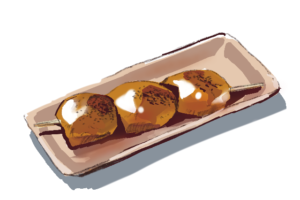 |
9. Kusamochi (Tochigi Prefecture)
Kusamochi are rice cakes made with mugwort, and are eaten from mid-March to mid-April, when the mugwort has sprouted and grown somewhat. Photo source: Ministry of Agriculture, Forestry and Fisheries |
10. Saka-manjyu (Kanagawa Prefectre)
The characteristic feature of this product is that the manju is puffed up by the power of fermentation using koji (malted rice). Generally, it is filled with Ogura-an (sweet bean paste).
|
關東十大排行榜
1. Botamochi (栃木縣)
牡丹餅是將糯米和粳米一起搗碎捲成捆,再包上甜豆沙而成的食物。 圖片來源:農林水產省 |
2. Igamanjyu (埼玉縣)
伊賀饅頭是饅頭和石飯(紅米)蒸煮的合體。那酸酸甜甜的口感吃一次就會上癮! 圖片來源:農林水產省 |
赤餅是一種由紅色玉米粉製成的紅色麻糬。
圖片來源:農林水產省 |
串團子是用煮沸的米粉製成的麻糬再串起來燒的食物。 圖片來源:農林水產省 |
杮餅是用油炸或炭烤的麻糬製成的,主要作為茶道小吃來品嘗的小吃。做法是將麻糬放入低溫油中,使其適度膨脹而不留核。
圖片來源:農林水產省 |
6. Udemanjyu (埼玉縣)
是用新小麥製成的小吃。Ude-manju”是yude-manju(ゆでまんじゅう)這詞演化的。意思是「煮饅頭」。它的特點是用熱水煮而不是蒸。而通過煮沸,饅頭的質地比包子會更粘稠。 圖片來源:農林水產省 |
7. Kuri-no-shibukawani (埼玉縣)
用栗子做的甜點。做法是將水和栗子放在鍋裡煮,當栗子變軟時,再加水和糖來燉。這是因為在過去,糖是昂貴而珍貴的調味料,因此它在節日和慶典場合才會偶然出現。 圖片來源:農林水產省 |
是以甜味噌醬串燒的饅頭。
|
草餅是用艾草製成的麻糬。一般在3 月中旬到 4 月中旬艾草發芽長得長一些的時期食用。 圖片來源:農林水產省 |
酒饅頭的特點是利用米麹發酵的力量使饅頭膨化。 一般都使用小倉庵(甜豆沙)。 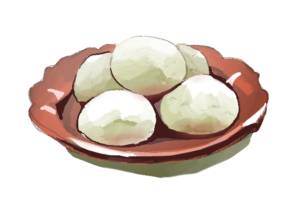 |
